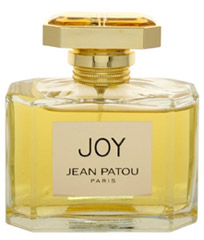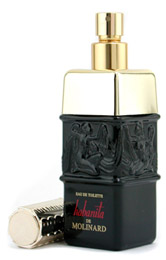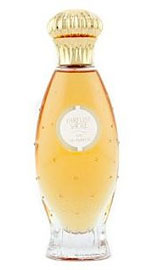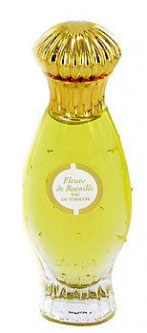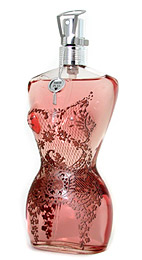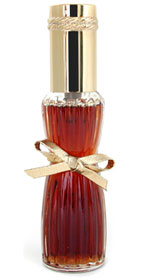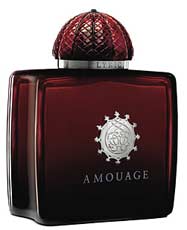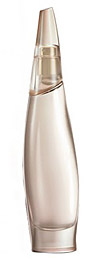People hunt down bottles of Bal à Versailles to see what it smells like. I have to say some of these people probably do it because they’re curious about the perfume Michael Jackson wore. Hard to blame them for being curious, but amongst some of the more popular opinions include, “This doesn’t smell like how I’d imagine Michael Jackson would smell like” and “This smells weird”.
In Bottle: It opens as an aromatic animalic. Love how that rolls off the tongue. Rosemary is prominent at first, followed by a very light dust of florals that are accompanied by a dark animalic undertone.
Applied: Get used to that dark animalic undertone as it will accompany you on your olfactory quest. The rosemary is quick to open up and for me, the rosemary stuck around in the top notes and fled as the mid-stage introduces a very classic smelling floral. Powder and flowers, sultry, dark, sensual. The florals are joined by a smooth series of woods that keep this fragrance somewhat unisex. This is a masquerade party in the form of a perfume. It’s classic, it’s sensual, but it’s not afraid to be elegant either. It’s a deeply complex little journey as the mid-stage slowly gets more and more sultry on entering the final round of its very interesting existence. The end stage is a mix of warm amber, smooth woods, and sensual musk.
Extra: Bal à Versailles was released in 1962 and ever since a certain King of Pop adopted it as one of his favorite perfumes, it has been known to many of his fans as, “That perfume Michael Jackson liked, but I don’t”. For the rest of us, Bal à Versailles is a beautiful piece of complex nose art.
Design: I like the shape of the bottle, very vintage looking. It’s beautifully designed and beautifully presented. I’m even okay with the Rococo-style painting on the bottle which at first glance seems out of place, but grew on me. It’s Rococo, how can I lose? For someone who doesn’t usually get on board with things like this, Bal à Versailles played just the right amount of right to make the design work. Not to mention the look of this bottle is so easy to recognize anywhere.
Fragrance Family: Oriental
Notes: Rosemary, orange blossom, mandarin orange, cassia, jasmine, rose, neroli, bergamot, bulgarian rose, lemon, sandalwood, patchouli, lilac, orris root, vetiver, ylang-ylang, lily-of-the-valley, tolu balsam, amber, musk, benzoin, civet, vanilla, cedar, resins.
Now, bear in mind that Bal à Versailles is not the most accessible fragrance out there in terms of going to a department store, slapping some money on the counter and saying, “I’ll have the usual, Tom”. I wish ordering perfume was like that. Anyway, Bal à Versailles is not as hard to find as one might think. It’s not everywhere like Britney Spears Fantasy, but it’s not squirreled away in an obscure niche like–heh–Bruce Willis Cologne either. You can easily find Bal à Versailles on discounter sites and some department stores. I recommend anyone interesting in fragrance to give it a sniff. And if you were wondering what one of Michael Jackson’s favorite perfumes smells like, well, there you go.
Reviewed in This Post: Bal à Versailles, 2003, Eau de Toilette.






